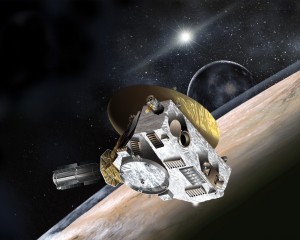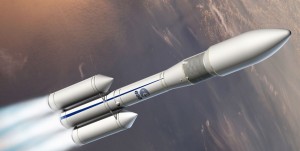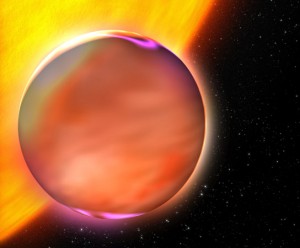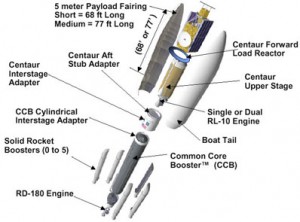June 20, 2014 – I used to write compiled Friday headlines as a regular feature of this blog, but have strayed away from that approach for many months. I thought today I would revisit the model to share with you stories about space that made headlines in the last week. Mind you some were on obscure back pages.
European Partners Combine on Space Launch Technology to Compete with SpaceX
How flattering for SpaceX to have Airbus Group and Safran joining together to push back against the growing presence of Elon Musk’s company. The two see the Ariane, Europe’s primary launch vehicle, as a counter to the Falcon9 and the future Falcon Heavy.
The current Ariane 5 continues to enjoy a significant market share in commercial satellite launches. But SpaceX can launch satellites for 30% less cost. And with re-usability of Falcon launchers becoming a reality, the price will continue to drop. That puts 16,000 Ariane jobs at risk in France.
A mid-life new version of the Ariane 5 is expected to be available in 2018. It features a new upper stage engine technology that is capable of re-ignition while in orbit. This is something SpaceX and its Falcon launchers, can already do.
Ariane 6, the next generation of European space launcher, is still seven years away from market entry and the European developers are still tying to come up with a final design. At present it appears to have some of the features of the Falcon Heavy but it remains a throw away launcher which means cost per launch may prove uneconomical as SpaceX further develops reuse capability.
New Exoplanet Life Detection Model Developed by Researchers
It seems that detecting the presence of methane in spectral analysis of exoplanet atmospheres may be the key indicator for finding life elsewhere in the Universe. Researchers at University College London and University of New South Wales can now detect methane molecules in remote planets by analyzing the way their atmospheres absorb starlight. They then compare the output to a spectrum they have modeled. The breakthrough has only been made possible because of new supercomputer processing power which provides the ability to analyze enormous amounts of data from a range of astronomical and satellite sources.
To discover life on exoplanets, the astronomers believe that methane levels hold the key. So does that mean Titan, Saturn’s largest moon, awash in methane lakes and with a hydrocarbon laced atmosphere, may also harbor life? It appears that evidence of life hunting covers methane molecules from cold to hot. How hot? Up to temperatures of 1,220 Celsius (2,228 Fahrenheit) degrees, an environment more like the planet illustrated below, a depiction of HD 189733b, a recently discovered exoplanet 63 light-years away.
That certainly isn’t the case with Titan with surface temperatures of -179 Celsius (-290 Fahrenheit) degrees and whose nitrogen rich atmosphere is ten times the density of Earth’s with 1.6% composed of methane.
United States Starting to End Reliance on Russia for Access to Space
In the post-Crimea world the American space program is seeking more domestic content in its space launch capability.United Launch Alliance, the consortium of U.S. companies responsible for the bulk of military satellite deployments recently signed contracts with a number of private companies to help it develop a new rocket engine to replace the RD-180, built by Russia’s NPO Energomash. This is the rocket that has been used to power the Atlas V launch vehicle, deconstructed in the image below.
ULA was created by Lockheed Martin and Boeing to service the American space program. It is not alone in creating an independent launch capability for American satellites and human space flight. SpaceX and Orbital Sciences Corporation are also in the running although the latter relies on Russian engines for its Antares first stage.
New Horizons Mission to Pluto Searches for Additional Kuiper Belt Object to Visit
In a little over a year from now, New Horizons will make its flyby of Pluto and its five known moons. Pluto, now a sub-planet, is considered a large Kuiper Belt object. But to have flown all this distance and visit only one world seems like such a wasted opportunity. That’s why the Hubble telescope is being tasked to find a second Kuper Belt object to visit after passing Pluto.
How will Hubble make its discovery? First it has to observe and catalogue a number of candidates. Then the orbits of each need to be calculated to make sure that with an additional rocket engine burn after it completes its primary mission, New Horizons can be sent on a rendezvous trajectory.
So far from ground based observation the New Horizons team has discovered 50 Kuiper Belt objects but none of these have the right orbit. Adding Hubble to the search gives the scientists 90% assurance that they will find a suitable candidate and give us not only our first view of Pluto but also of an even more remote body here in the Solar System.













